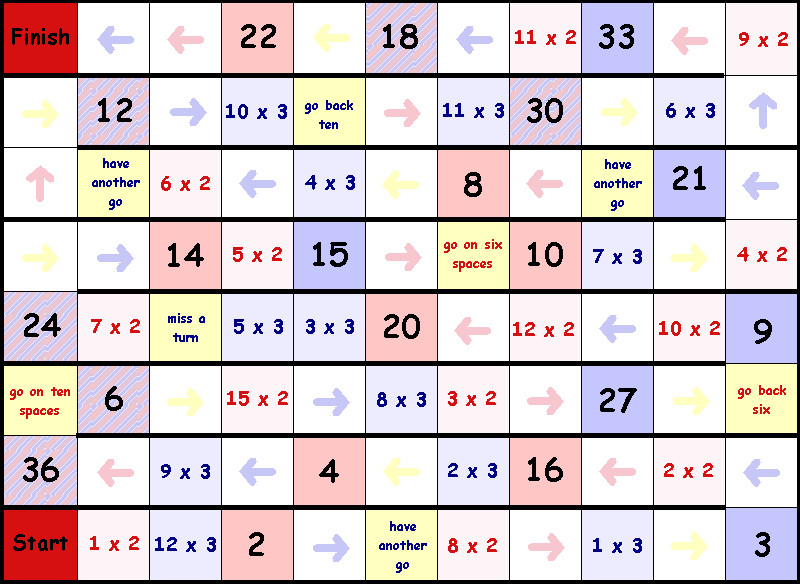
TEACHING OBJECTIVES :
Social conventions of game play : turn taking, abiding by rules/not cheating, losing gracefully etc.
Counting with 1 to 1 correspondence.
Counting on (starting with NEXT square)
Practice in 2 times table
Practice in 3 x table
This is a simple "track" board game. It is best played with a very small group or better still, one to one with an adult as there may be delays while calculations are made.
Decide beforehand if the answers are to be worked out "in your head," (practice for mental arithmetic) or if apparatus is allowed (eg. fingers or counters). If necessary, provide such apparatus for counting.
YOU WILL ALSO NEED:
Printout of board (laminated if possible, to add durability.)
Die (numbers or dots)
Counters - different colour for each child
RULES OF PLAY:
Start at red square marked "Start."
Throw die : move along board for the number of spaces thrown on die.
If counter lands on a "table" sum, the player has to work out the answer then move to the square with that number on it. (The squares are coloured differently for 2x and 3x, and striped for answers common to both, to aid finding the correct answer on the board.)
If counter lands on a square without a "table" sum, the play moves clockwise to the next player.
Follow any other written instructions on board
First player to reach "Finish" is the winner : you will have to decide whether to finish with the exact number or whether to simply "go past" finish.
You can make the game more competitive for older children by allowing them to "knock off" another player's counter (and yours!) if they land on it at the end of their move, the counter landed on going back to the beginning to restart. Consider this carefully - it makes the game more fun and competitive, but make sure all the players can cope with having to restart when they thought they were almost at the end.
BACK

